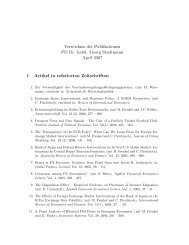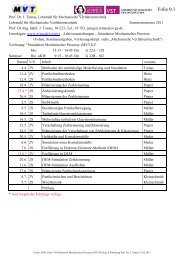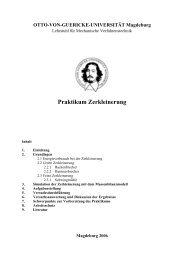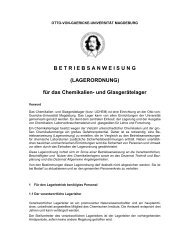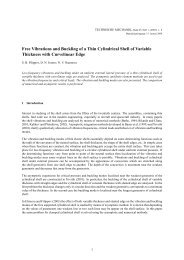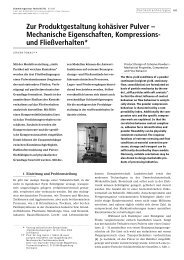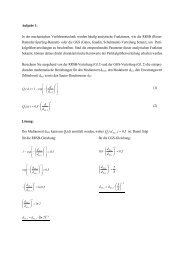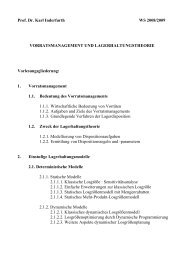Mechanics of nanoparticle adhesion â A continuum approach
Mechanics of nanoparticle adhesion â A continuum approach
Mechanics of nanoparticle adhesion â A continuum approach
You also want an ePaper? Increase the reach of your titles
YUMPU automatically turns print PDFs into web optimized ePapers that Google loves.
<strong>Mechanics</strong> <strong>of</strong> <strong>nanoparticle</strong> <strong>adhesion</strong> — A <strong>continuum</strong> <strong>approach</strong> 39This can be rearranged if one uses the dimensionless plastic repulsion coefficientκ p according to Eq. (43) to obtain the following simple expression:v1,H,HL2( − ) 1/ 21 e a 6⋅p= ⋅ ⋅κ⋅2eF = 0 fdpρs(90)Unfortunately, Eq. (90) does not include the increase <strong>of</strong> “s<strong>of</strong>t” contact flatteningresponse h K by increasing particle impact velocity v 1 . Now this dominant energyabsorption W diss during particle impact stressing, beginning at any unloadingpoint U, is considered approximately as a trapezium-shaped area between elastic–plastic yield boundary and <strong>adhesion</strong> boundary for the contact <strong>of</strong> particles 1 and 2in the force–displacement diagram <strong>of</strong> Fig. 9. With the contribution <strong>of</strong> the work <strong>of</strong><strong>adhesion</strong> W A to separate this contact from equilibrium separation a F=0 to infinity,the energy balance gives (A K is the contact area):m212 ,2 2( )hKU, hKU,⋅ v − v = F ( h ) d h + −F ( h ) dh1 1R , N K K N,Z K KhKf, hKf,+ A ⋅ −p ( a) daK∞aF=0VdW( )3⋅pv v h h h a2 2 f2 21−1,R= ⋅ κA ⋅2K,U−K,f+ κp ⋅K,U⋅= 04⋅Fρs⋅r1,2(91)(92)The difference in characteristic impact velocities results directly in a center <strong>approach</strong>,h K,U , expressed by the unloading point U. The response <strong>of</strong> this contactdisplacement h K,U is a consolidation force, F N,U . Additionally, a certain preconsolidationlevel, F N,U , in a shear zone may affect the sticking/bounce probability.If the rebound velocity v 1,R = 0 the two particles will adhere. Consequently,the critical sticking velocity v 1,H is obtained without any additional losses, e.g.,due to elastic wave propagation:2 2( )3⋅pv = ⋅κ⋅ h − h + κ ⋅h ⋅af1,H 2 A K,U K,f p K,U 04 F =⋅ρs⋅r1,2(93)For example using data from Refs. [147, 149], this critical sticking velocity liesbetween 0.2 and 1 m/s for titania, curve in the sticking velocity–displacementdiagram in Fig. 9, which is equivalent to an average pressure level σ M,st = 2 to 18kPa (or major principal stress σ 1 = 4 to 33 kPa) [151]. These calculation results <strong>of</strong>particle <strong>adhesion</strong> are in agreement with the practical experiences in powder handlingand transportation, e.g., undesired powder blocking at conveyer transferchutes. In terms <strong>of</strong> powder flow the behavior after multiple stressing <strong>of</strong> s<strong>of</strong>t de-



